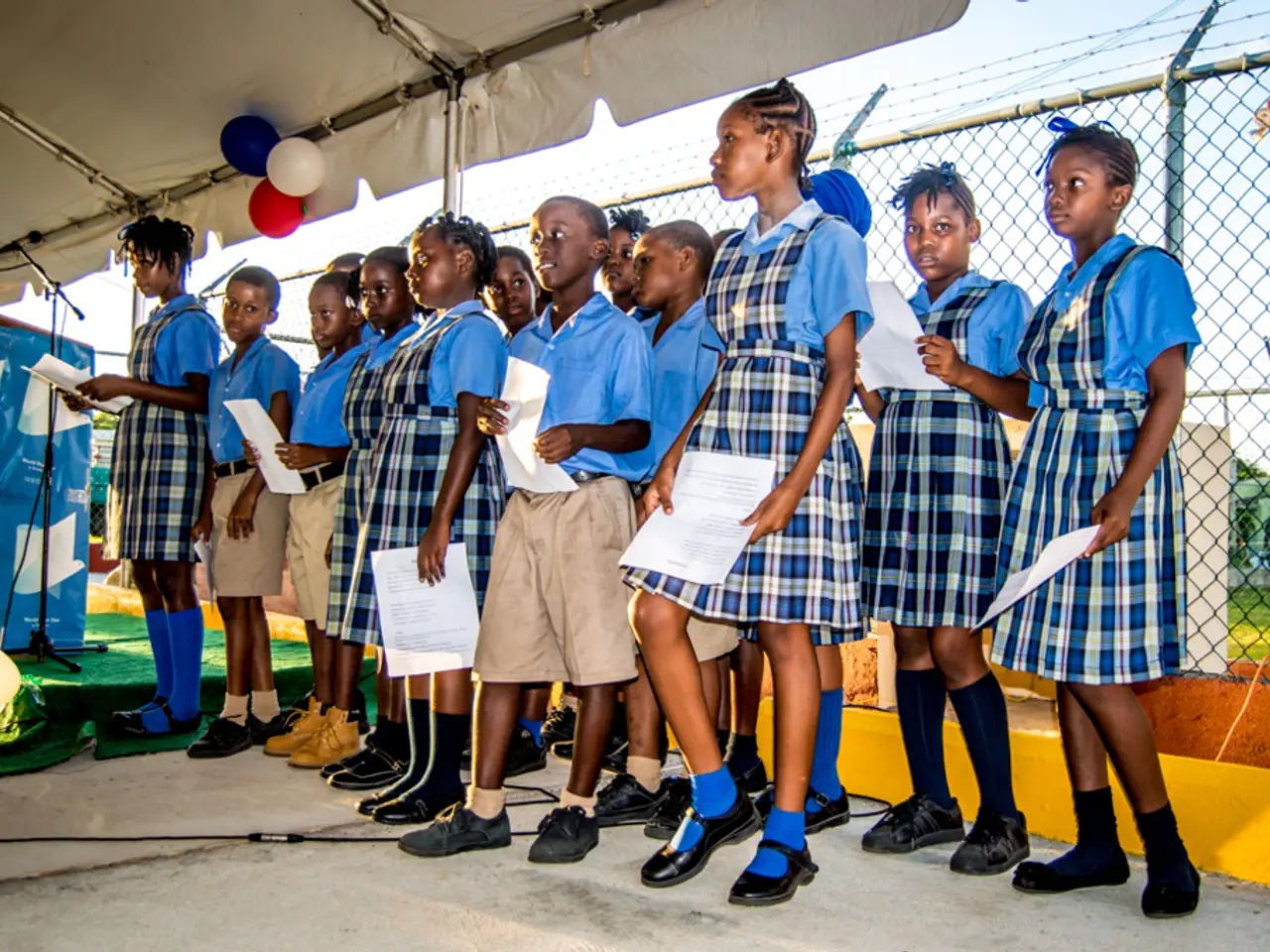Increase in Student Population - Insufficient Number of Educators Persists - Class Commencement: Increased Student Population Faces Insufficient Teaching Staff
In Lower Saxony, the teacher shortage remains a pressing issue, particularly in rural regions and schools other than gymnasiums. The state has taken steps to address this, advertising 1,600 teaching positions for the upcoming school year, with 1,414 currently filled. The state government also plans to create an additional 1,350 job opportunities for the 2026 school year.
The opposition leader, Sebastian Lechner, has called for more action to improve the teaching supply, criticising the process for lateral entrants into teaching in Lower Saxony. He advocates for a uniform legal regulation to provide schools with legal certainty if they prohibit students from using mobile phones.
The CDU leader also suggests easier recognition of foreign teaching qualifications, reform of teacher training in Germany, more time for teaching instead of administrative tasks, and financial incentives for part-time teachers to increase their hours.
The state government, however, does not plan a general ban on mobile phones at primary schools. Instead, schools will continue to decide their rules for media use.
As for addressing the teacher shortage, regional policymakers are encouraged to consider expanding teacher training programs, creating long-term education workforce planning strategies, offering incentives to attract and retain teachers, and exploring alternative teaching approaches and technology.
For instance, establishing new teacher training courses or local university programs could help increase the supply of qualified teachers, similar to the model used in Upper Lusatia. Short-term measures like having teachers cover additional classes or support colleagues at other schools can serve as stopgap solutions, but they are not sustainable.
Germany's regions need long-term education workforce planning strategies that encompass recruitment, retention, and incentives for teachers, addressing both immediate shortages and future demand. Possible incentives include improved salaries, better working conditions, targeted support in shortage subjects, and career advancement opportunities.
While not explicitly stated for Lower Saxony, supplementary educational models might help alleviate traditional staffing pressures. For example, research on education innovations and interdisciplinary teaching suggests that initiatives like climate education could be beneficial.
The Red-Green coalition in Lower Saxony is implementing a plan to provide free tablets to seventh-graders starting from the 2026/27 school year. The government plans to spend approximately 800 million euros on this initiative by 2031. However, the education union GEW has warned of additional burdens caused by the tablets if there is no trained IT personnel.
Schools will have the autonomy to decide how the tablets will be used. The state government aims to use the loan tablets to create new possibilities for more targeted teaching, rather than simply transferring analog learning to digital.
As the new school year begins, around 900,000 students will return to classrooms in Lower Saxony, with approximately 82,000 children starting school this Saturday. It is hoped that the combined efforts of the state government, schools, and regional policymakers will lead to a more stable and effective teaching supply in the future.
[1] Source: Kultusministerkonferenz (2021). Lehrerkräftestellung in Deutschland: Strategien und Lösungen. [2] Source: Forschungsstelle für Bildungsinnovationen (2020). Interdisziplinäre Bildung in der Praxis: Erfahrungen und Herausforderungen.
- To combat the teacher shortage in Lower Saxony, particularly in rural regions and non-gymnasium schools, the state government is advocating for community policies that include expanding teacher training programs, long-term education workforce planning strategies, offering incentives for teachers, and exploring alternative teaching approaches and technology.
- Beyond traditional teaching methods, education-and-self-development initiatives like climate education could be beneficial in addressing staffing pressures and fostering learning in schools, as suggested by research on education innovations and interdisciplinary teaching.




